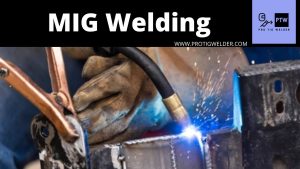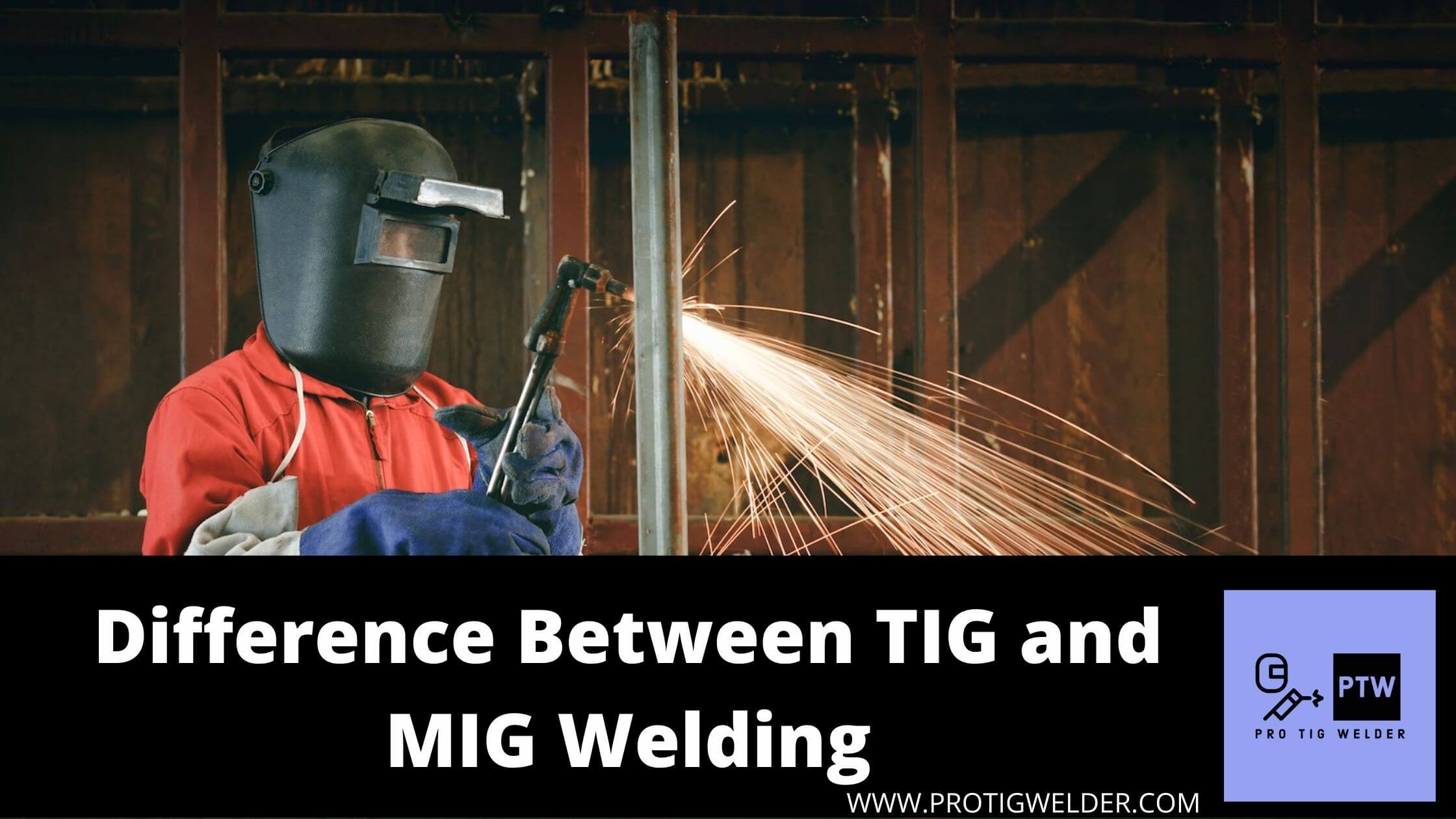It’s no secret that welding is an incredibly diverse and versatile profession. You can be a welder in just about any industry, from aerospace to shipbuilding to the automotive industry. And with so many different types of welders (TIG welders, MIG welders, aluminum welders…) it can be hard to know which type you want to become! But don’t worry – this article will give you everything you need to know about each type of welder and help point you in the right direction for your future career.
Welding has been around since ancient times, but only recently have there been enough advancements in technology that create new opportunities for these skilled professionals. As such, there are now three main categories: Tungsten Inert Gas (TIG), metal active gas (MAG or MIG) and flux-cored arc welding (FCAW). Each welder uses a different process, but you can learn more about FCAW in another article.
Difference Between TIG and MIG Welding
The main difference between TIG and MIG welding is how they create the arc, which creates different effects and results. Tungsten inert gas (TIG) welders use a manual torch to produce an electrical arc that fuses metal together. Gas shielded metal active process (MIG) welders use a wire electrode that heats up and uses a filler rod to fuse two pieces of metal together. This process is considered to be easier, but it doesn’t have the same precision when compared with a TIG welder.
What is TIG welding?
First, I’m going to talk about what TIG welding is. TIG welders use a torch to produce the arc which makes for much more control and
So next, I’m going to talk about how TIG is done. First, you will need to set up your welding machine according to the thickness of the metal you are working with. Then prepare the tungsten electrodes for use by clipping them into what’s called a contact tube which will be used later to create the arc.
After that, shield the area around you with a breathing apparatus or at least keep your face out of the fumes. Then you’re going to want to clean the metal. If it’s not already shiny where you’re planning to weld, then you can do this by sanding it with 100-grit paper. Start out using a one or two-inch pattern and gradually work your way up through finer grades of sandpaper until the surface is perfectly smooth.
Then, if there is any oil or grease you can wipe it off with a rag. You should avoid touching the metal until it’s completely dry which takes roughly three to five minutes.
Next, put down whatever protective covering you may need for what you’re welding and turn on your shielding gas supply. Then use your contact tube to place one of the electrodes at the very edge of the metal. This will be your cathode and you’re going to need to move it very slowly, about one centimeter per second. As you do this, try not to let any of the electrodes touch the surface until you can see a puddle forming on top of it, or else you’ll get what’s known as a cold start.
In this case, you’ll need to turn off your machine and let everything cool down for about 30 seconds before trying again. You should also make sure that the electrode is making contact with the metal by frequently testing it against another piece of scrap metal until you can see an arc forming.
Once you’ve got a clean puddle with a nice stable arc, you’re ready to fill the weld. To do this, just let the electrode melt some filler rod onto the puddle while simultaneously moving it forward at roughly 1/2-inch per second. Try not to stop or slow down because doing so will cause the metal to cool and harden while there is still more to be added. If you need to pause for any reason, it’s best to turn off your gas first because stopping the arc can cause it to pop, throw molten metal, or start arcing on its own which is very dangerous.
What is MIG welding
It’s not as forgiving of mistakes, but there are many who believe that MIG offers better coverage on thick metals.
Funds for this which will be used up in one year can be allocated to other projects and initiatives that would need around two years to finish. This situation is different from the first one because the funds will run out before the project is completed and it is not a new allocation of
This is a good time to revisit some of our earlier discussions about how we might approach this topic with others who hold different worldviews if they brought up this question as to their belief. A lot of people believe that tig welding is better than MIG welding.
This topic might also be a good time to revisit how other people’s worldviews may require some changes in the way we present information. In this case, other people thinking that tig is better may mean that they’re not aware of all the benefits of MIG because it doesn’t fit their own personal beliefs about what works best.
Which process should you use for your project?
You need to weld a project and you’re not sure which process is best for the job. TIG welding offers more control and precision, but MIG welding is less difficult. If you want the highest quality of welds, go with TIG welding. However, if your project needs to be completed quickly or on thicker metals then MIG might be better for you.
Why would you choose one over the other
There are a few factors that distinguish TIG from MIG welding. The most relevant is the heating of the material to be welded. In MIG, an electric current flows through a wire and burns off and melts parts of the metal and mixes it with other parts in order to form a pool. It is often thought of as “a process in which the welder simply pushes metal into place.”
But while this technique can produce decent results, it’s not too wise when working with thinner materials such as sheet metal or flexible tubing. That’s because there may not be enough arc-supplied heat to adequately melt all the surfaces before melting resumes at its own pace rather than being controlled by you.
TIG welding Pros:
-More control and precision over the weld
-Can do fill and overlaps
-Welding is more forgiving of mistakes
-Better coverage on thick metals
TIG welding Cons:
-More expensive than MIG welding
-Can be difficult to learn
MIG welding Pros:
-Much more affordable than TIG welding
-Easier to learn and practice
MIG welding Cons:
-Can’t do fill or overlaps because the source of the arc is not being manually controlled by the welder, so it can’t be stopped/started at will.
CONCLUSION
While there are many similarities between the two processes, they mainly differ in how welding rods must be manually added and an electrical current is created. If you’re looking for more control over the welding process, a TIG welder may be better for you. If you want to increase efficiency and speed, MIG welding might be more up your alley.

![What is MIG and TIG Welding | Best Guide 2022 [PTW] what is mig and tig welding (1)](https://protigwelder.com/wp-content/uploads/2022/01/what-is-mig-and-tig-welding-1-150x150.jpg)
![Best Ac Dc TIG Welder 2023 | Top Reviews [Apr Update] best ac dc tig welder](https://protigwelder.com/wp-content/uploads/2021/12/best-ac-dc-tig-welder-150x150.jpg)
![Best Inexpensive TIG Welder 2023 | Buying Guide [Apr Update] best inexpensive tig welder](https://protigwelder.com/wp-content/uploads/2021/12/best-inexpensive-tig-welder-150x150.jpg)
![What is Spot welding? And How Does It works? [PROTIGWELDER] what is spot welding](https://protigwelder.com/wp-content/uploads/2022/01/what-is-spot-welding-1-150x150.jpg)

![Yeswelder MIG-205DS Reviews [2022] | PROTIGWELDER Yeswelder MIG-205DS Reviews](https://protigwelder.com/wp-content/uploads/2022/01/Yeswelder-MIG-205DS-Reviews-150x150.jpg)
![How TIG Welding works? [Understanding of TIG Welding] How TIG Welding works](https://protigwelder.com/wp-content/uploads/2021/12/How-TIG-Welding-works-1-150x150.jpg)


